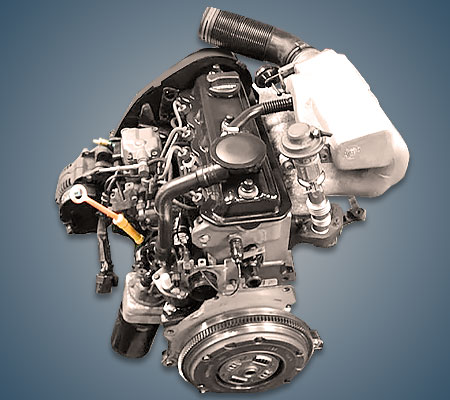
1.0 TSi engine from Volkswagen
Content
EA211 units, including the 1.0 TSi engine, have been used in various variants of Volkswagen vehicles since 2011. Features of these engines include the use of four-valve technology, a double overhead camshaft (DOHC) timing belt drive, and an exhaust manifold integrated into the cylinder head. Please see the next section for more information!
Volkswagen 1.0 TSi engine - basic information
This bike is one of the smallest in the EA211 family. Despite the fact that the first units from this group went on sale already in 2011, the 1.0 TSi engine went on sale in 2015. This was a big step forward when it came to creating divisions on the principle of downsizing.
The 1.0 TSi engine from Volkswagen is best known for its use in the VW Polo Mk6 and Golf Mk7, and has also been installed in other Volkswagen vehicles in various power versions.
What engine did the TSi version replace?
The three-cylinder TSi model replaced the MPi. The old version had the same displacement, as well as bore, stroke and cylinder spacing. Like the compression ratio. The newer variant differed in that it used turbo-stratified injection rather than multi-point.
The introduction of the TSi EA211 was aimed at reducing the risk of ignition due to additional heat and pressure. Both models also share similar design features. We are talking about the box and the crankshaft, as well as the pistons.
Technical data of aggregates 1.0 TSi VW
With this power unit, the total working volume reaches 999 cm3. Bore 74,5 mm, stroke 76,4 mm. The distance between the cylinders is 82 mm, the compression ratio is 10,5.
The oil pump installed on the 1.0 TSi engine could generate a maximum pressure of 3,3 bar. The unit was also equipped with an electronically controlled wastegate turbocharger, an intercooler to cool the engine coolant, and a compact intake manifold made of plastic. The Bosch Motronic Me 17.5.21 control system was also chosen.
Volkswagen design decision.
The design of the unit included an open design die-cast aluminum alloy cylinder block with coarsely cast cylinder liners. A forged steel crankshaft was also chosen, with small 45mm crankshaft bearings and 47,1mm connecting rod bearings. This treatment significantly reduced the intensity of vibrations and friction.
The 1.0 TSi also features an aluminum cylinder head with an integrated exhaust manifold. The same design solution is used in the 1.4 TSI model - also from the EA211 family.
The downsizing procedure for the 1.0 TSi engine was very successful. Hot exhaust gases warmed up the power unit in a short time, and the engine itself adjusted to the driver's driving style due to the fact that the oil system uses stepless oil pressure control. This meant that the pressure of the substance was adjusted to the intensity of the engine load, the number of revolutions and the temperature of the oil itself.
Which cars used TSI VW engines?
The 1.0 TSi engine was installed not only on Volkswagen, but also on Skoda Fabia, Octavia, Rapid, Karoq, Scala Seat Leonie and Ibiza, as well as on the Audi A3. The device is of course also installed on models such as the VW T-Rock, Up!, Golf and Polo.
The engine has good fuel efficiency. Fuel consumption at a speed of 100 km / h is about 4,8 lav, in the city it is 7,5 liters per 100 km. Sample data taken from Skoda Scala model.
The operation of the unit - what to look for?
Despite the fact that the 1.0 TSi gasoline engine has a fairly simple design for a modern unit, more technically advanced equipment had to be installed in it. For this reason, the number of potential faults can be quite large.
The most common problems include carbon deposits on intake ports and intake valves. This is because the fuel in this unit does not act as a natural cleaning agent. The soot remaining on these elements effectively restricts airflow and reduces engine power, which in turn can lead to serious damage to both channels. Therefore, it is worth paying attention to the use of high-quality fuel - we are talking about super unleaded gasoline with an octane rating of 95.
It is recommended to change the oil every 15-12 km. km or 1.0 months and follow the maintenance intervals. With regular maintenance of the unit, the XNUMX TSi engine will run hundreds of thousands of kilometers without fail.
A photo. main: Woxford via Wikipedia, CC BY-SA 4.0

